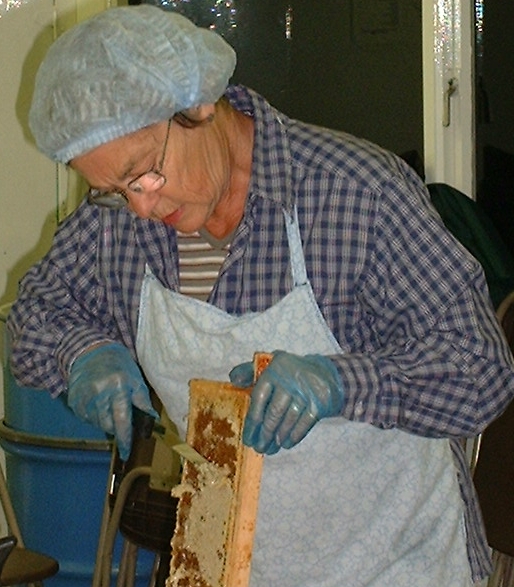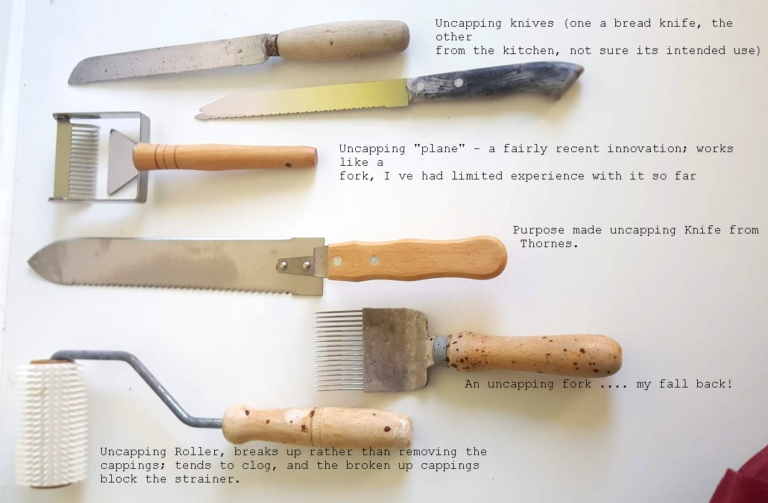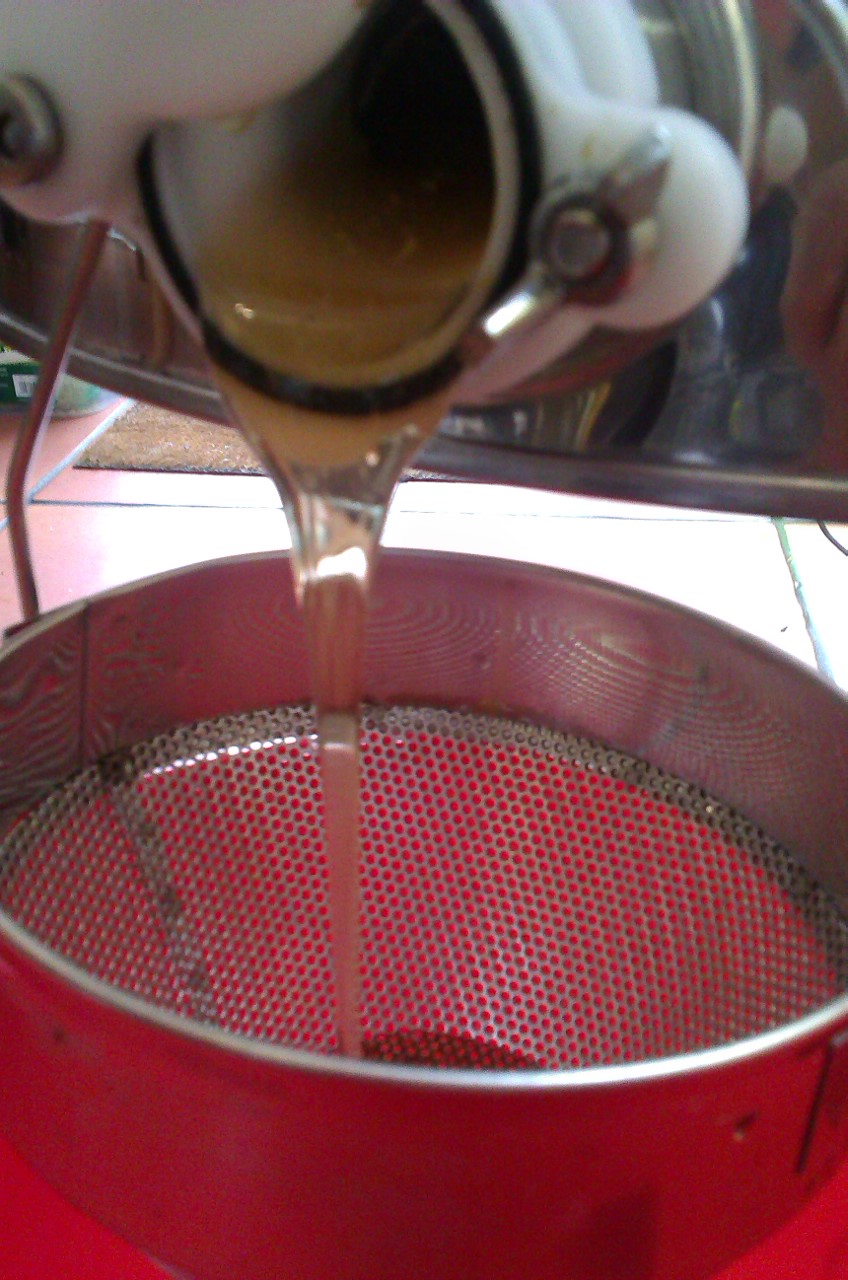OBKA Tutors Blog #15 – Honey Harvest 2 – Uncapping and Extracting
If you have been following the OBKA Tutors Blog 2020 you might notice that this is the second blog that covers uncapping and extracting.
The first blog was by David Lord, our Senior Tutor for the Beginners Course. This blog is by Andy Pedley. As always with beekeeping, especially as a beginner, it's always good to see different ways of doing things and picking put the elements that work for you (for example I always use a heat gun to melt the wax cappings.....)
So you’ve got your supers back home (or wherever you do your extracting) and they are stacked, probably on the floor, hopefully in a gravel tray to keep them off the floor surface and catch the drips, and covered to keep bees out (or in, perhaps); clean cloth is good for this!
You’ll need to be organised to extract – and a few words of warning …
- First, honey is very sticky. If you think I am stating the obvious, then its because it needs to be said! It gets on your hands, the door knob, the phone, your mugs, kettle, and from there transfers ALL round the house. So be very careful – I go into “extracting mode” and don’t answer the door, the phone, or do anything except extracting until the job is finished.
- If honey drips on the floor it will get on your shoes and then be tramped through the whole house; so minimise movement out of the extracting room, consider slippers to be taken off when you leave the room, dust sheets outside the room. Avoid dripping honey on the floor and wipe up any drips that do happen. When I was shown extracting, my mentor covered the kitchen floor with newspaper (remember that!!) and if there was a drop on the floor, put an extra sheet of news paper down to cover it. The paper was burned at the end of the exercise.
- Honey flows silently. It makes no noise if it overflows or spills, so be very careful about not over filling buckets.
- Honey is hygroscopic, so it absorbs moisture from the air; in order to keep, it needs to have a water content of 20% or less, and so the extracting room and all equipment needs to be as dry as possible.
- Honey smells and will attract bees, so the extracting room needs to be bee tight – windows shut, and if there are airbricks they may need covering. Working in a room full of bees is not fun!
- Finally, honey is veryheavy …. do not overfill buckets for that reason (you’re going to need to lift them when you are thinking about bottling the honey) and DO NOT STACK BUCKETS – buckets have been known to collapse under the weight of a bucket above, spilling the contents of the bucket on the floor ….
Remember too that if you are going to sell honey, then food safety and trading standards law applies; everything needs to be food grade, clean, and you need to be healthy, clean and wearing appropriate clothing …. (picture, a well prepared food handler) – gloves are a good idea, some kind of overall, head covering and if you have a beard, a beard snood -all can be bought on line. During these COVID-19 Days, a mask is desirable.

A well prepared food handler
I find working left to right is good, so the super’s are stacked on the left; one is promoted to the worktop, and the frames are extracted one by one for uncapping.
Uncapping is done over a tray of some kind (I use a stainless steel baking tray with a wooden “bridge” to rest the frame lug on)as the cappings, dripping with honey, need to be collected.
“Cappings honey” is drained off later, and some say it especially good to prevent hay fever. Cappings themselves of course are bees wax, and clean, white, new, so some beekeepers keep it separate and use it to make their blocks of bees wax for the honey shows.
There are lots of tools that can be used for uncapping … for hobbyists, then you can use a knife (bread knife, carving knife, or bee keeping suppliers sell special uncapping knives); a heated uncapping knife (I used to have one, but stopped using it as the honey could be seen boiling under the heat) uncapping fork, spikyroller, recent device is an uncapping plane). Each has their pro’s and cons, which I ll not go into here. Some also use a hot air gun – which can be very quick, but I can not make it work reliably! Commercially uncapping machines are available too.
Uncapping is done holding the frame so that the top overhangs a bit; the cut is then made and as it is overhanging, the wax drops clear into the tray. It’s good to minimise the bits of wax on the frame, as they ll clog in your strainers later.

Uncapping tools
Once uncapped, the frame can be put in the extractor; and the next frame prepared until the extractor is filled. Extractors spin the frames, and centrifugal force spins the honey out. Make sure the tap is closed when you start! There’s a video of a rather fun (but not recommended) transparent honey extractor on Thorne’s YouTube channel https://www.youtube.com/watch?v=J2cyfmYb6gE
Extractors come in different types and sizes (in the Thorne’s video it’s a tangential, where frames have to be spun twice, with the frame being turned round in between); there are also Radial Extractors where the frames are like the spokes of a wheel, and both sides are extracted at once. Manual extractors are cheaper, but need hand “winding” . Electric extractors have a motor with variable speed, so save much effort, time (you can be uncapping the next batch of frames while the extractor spins all by itself) – but are of course much more expensive.
Frames need to be balanced in the extractor – full frame opposite full frame – as extractors will vibrate and move round the room – start on a slow speed and increase the speed as the honey comes out of the frames.
Once uncapped, the frames are put back in the super, stood out of the way (on a tray to catch drips) and when done, returned to the bees (for apiaryhygiene reasons, ideally the same hive that they came from) where the bees will clean off the residual honey) so you can store the frames for winter.
The honey is run out of the extractor, though some kind of strainer (see the video) and into buckets for storage; put the lid on the bucket and ensure it is sealed – make sure it is airtight! I cling film mine as a belt and braces approach.
(Next… straining and bottling.)
Andy Pedley
